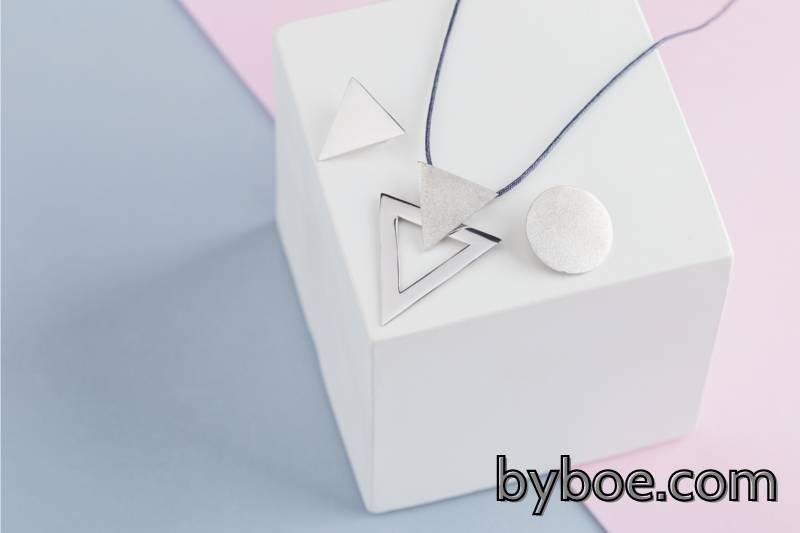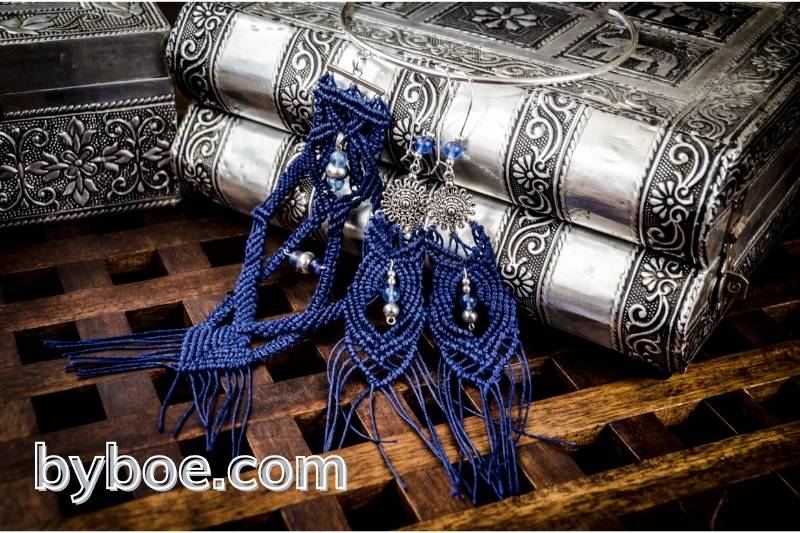Do you have many silver bracelets but have a hassle finding ways to manage yellowish stains? How To Clean Silver Necklace is the most significant problem for most silver accessory fans. But, not all sites provide enough information to execute the cleanup process yourself securely.
However, we’re convinced that this guide can allow you to clean silver without having to spend a great deal of work and cash.
There are several methods to produce shiny silver necklaces. The methods that we’ve found are the most successful are outlined below. And also, to execute the cleaning process, you have first to prepare the essential tools. Read this article for additional information.
Table of Contents
What is tarnish?
Tarnish is a thin coating of rust that rapidly creates more than your silver jewelry, leading to creating a dark coat that’s undesirable to check out. Tarnish is essentially the dulling of silver, which typically happens as a chemical reaction with hydrogen sulfide or sulfur within the air.
Typically, some think that the tarnish is brought on by oxidation, but it isn’t accurate since silver isn’t reactive to oxygen or water in average temperatures. Nonetheless, the metal in the metal like copper does is inclined to respond with oxygen.
That is the reason why silver is usually saved in air-restricted spaces – but because most jewelry boxes and cabinets aren’t, it still permits for the tarnishing process, only at a slower rate. Along with the atmosphere, your silver jewelry might respond with your skin’s alkaline amounts.
Sulfur and amino acids that may be seen in sweat can lead to discoloration of your skin and jewelry. Cleaning the jewelry frequently will help to avert this sort of discoloration.
How To Clean Silver Necklace

Method 1: Using Toothpaste
The following system for cleaning silver jewelry in your home functions well on heartier silvers because of the abrasive character. It’s wise not to use toothpaste on highly polished silver or sterling silver jewelry. Instead, use white toothpaste and a soft toothbrush to attain that dazzling glow in your satin or matte silver jewelry.
The very first step is picking the ideal toothpaste for your occupation. White toothpaste devoid of artificial coloring, baking soda, or whitening agents is most excellent if removing tarnish from silver jewelry. These additives are more abrasive than the toothpaste and may leave tiny but different scratches on your favorite jewelry pieces.
Wet the jewelry using a spray bottle or damp fabric to make it simpler to operate the toothpaste. Dab a tiny bit of toothpaste onto the necklace and gently rub it on the jewelry to eliminate tarnish. A classic toothbrush is a beautiful alternative for scrubbing deep inside small cracks to get finely-braided silver chains or silver necklaces.
Method 2: Using Soap and Water
1. Use a fabric that does not scratch. A microfiber fabric or a jewelry-polishing fabric is best for polishing your necklace. These materials will not scrape your jewelry, such as paper towels, as well as cells can. You would like something gentle and lint-free for polishing.
If you have to get into small places, try out a cotton swab.
2. Begin with a bit of soap. If your silver necklace is mildly tarnished, you can begin with using a little bit of dish soap. In a cup of warm water, add a couple of drops of this soap. Stir this up, then wet your fabric with the option to begin polishing your necklace.
3. Rub across the grain. You might think the perfect polishing movement is round. But that can scratch your silver up. A much better idea would be to rub back and forth, making sure to maneuver over the alloy’s grain, which can be less likely to scrape it.
- Together with the series, you might have to rub it between two palms with the fabric lightly.
- Continue to wash segments of the fabric, which means you are not incorporating tarnish back to the necklace.
- You might even use a sterile soft-bristled toothbrush to get detailed places, though try not to brush too hard.
4. Avoid blatantly oxidized details. Sometimes, the man who produced the necklace might have let specific areas of the jewelry darken to emphasize points. If you’ve got a bit like this, you have to prevent polishing those regions so that you do not lose a few of the attractiveness.
Method 3: Trying the Aluminum Bath Method
1. Prepare the bath. Begin with an aluminum pie plate or a bowl with aluminum foil covering the interior. Add a tablespoon (15 milliliters) of salt to the plate. Then add a tbsp of water Heater powder, OR baking soda.
Even though some people today use this technique on bracelets with prized or semi-precious stones, it might harm. Therefore it is better not to risk it if it’s valuable. Likewise, it is best not to attempt this method on classic or brittle silver.
- This process will eliminate all tarnish, including oxidized cosmetic areas ( black regions set up to make a layout).
- You might even include 1/2 a cup (118 milliliters) of vinegar now. Remember, vinegar will bring about the baking soda to respond, so wait for overflow.
2. Produce the solution. Then pour in hot water. A cup (237 milliliters) so will be sufficient. It needs to be near boil, but it does not have to be boiling. Stir the water, ensuring the salt and baking soda are fully dissolved in it.
3. Allow the necklace to soak in the remedy. When the solution is prepared, place the chain in the solution. It needs to be touching the aluminum, which means the tarnish will proceed in the silver to the aluminum. Let it simmer for a few minutes. You can do a little more if the necklace is particularly tarnished.
4. Eliminate the necklace. Use tongs or a fork to take the chain outside. Having a microfiber, polish any areas on the necklace which require a little more work. Be tender with more delicate places. Dry off the piece, and set it off.
Method 4: Polish Silver Necklace with Ketchup
An odd ally in your fight against silver tarnish is a frequent condiment within your pantry or fridge. Ketchup is a stunning choice to silver gloss and yields the glow in these jewelry box favorites, which have lost their luster.
The acetic acid in tomatoes is the same element found in organic cleansers such as vinegar. This acid strips down layers and removes tarnish. To wash, fully submerge jewelry pieces in a glass jar of ketchup.
Let your silver bits sit at the ketchup for approximately ten minutes before taking them out and simmer them. Buff them with a sterile fabric free of lint. This way is also an excellent way to clean and polish silver.
Have you got stainless steel jewelry? To wash steel jewelry, you can set a dab of ketchup onto a cleaning rag to rub your silver or get tarnished stainless steel bits. Rinse well and dry. No longer tarnish and a stunning glow!
How to Clean a Sterling Silver Chain
If your sterling silver necklace does not have some stone and is a series, the fabric polishing method might not be perfect. It is hard to enter the areas between the links. Instead, consider a dip cleaner, for example, Hagerty Instant Silver Dip.
Bear in mind silver dip will eliminate all of the tarnish on the item, so you will drop the darkened patina that may flaunt a pretty routine. It is sometimes a fantastic alternative for a simple string, however.
How to Clean Silver-Plated Necklaces

Many bracelets marketed as silver are not good sterling silver. Instead, a different metal such as aluminum or brass is plated with a thin coating of silver.
Have a little time to check out silver marks before you begin cleaning because these will inform you of the silver material. It would help if you always were careful when cleaning plated jewelry, as vigorous scrubbing may peel thin plating.
- Use a gentle detergent, such as dish soap, diluted with warm water to remove any grime and wash up the stone.
- Then wash out the necklace with a gentle jewelry cleaning formula, for example, Weiman Jewelry Cleaner. If the necklace includes gems, do not submerge them in the cleansing procedure. Somewhat, dampen a cloth and lightly rub them.
- If the necklace remains tarnished, rub it rather softly with a silver polishing cloth. Attempt to minimize rubbing as far as you can.
How can I prevent my silver from tarnishing in the first place?
While cleaning the silver bracelets is an easy fix, there are strategies to prevent tarnish until it begins. Regular contributors to the oxidation process of silver have been humidity, moisture, and makeup.
Cleaning your silver jewelry following every use is the very best method to prevent a buildup of mold and compounds that cause the silver to tarnish.
Utilize a silver polishing cloth to buff and clean the silver bits, particularly after a hot, sweaty day on a rainy spring day. Equally, prevent using jewelry in the fitness center and keep it from bathrooms when showering. This may prevent excessive moisture from collecting on the necklace.
These cleaning solutions are an affordable means to polish silver and save you a trip to the jeweler. Whichever silver cleaner works best for you, don’t forget to pick the cleaner ideal for the kind of silver on your jewelry. Silver plating can renege when utilizing grittier cleansers and will do much more harm than good.
We hope you enjoyed these silver jewelry cleaning thoughts. You understand how important it’s to conserve that additional particular jewelry piece. Do not neglect to talk about these options to wash a silver necklace with your family and friends on Facebook and Pinterest!
FAQs
What is the best home remedy to clean silver?
Vinegar, water, and baking soda together are a great option for many things including your tarnished silver. To use this method you just need to mix 1/2 cup of white vinegar with 2 tablespoons of baking soda in a bowl of lukewarm water. Let the silver soak for two to three hours.
Does cleaning silver with baking soda damage?
Although using baking soda and aluminum foil can quickly remove tarnish from silverware, some dealers caution against using it on antique silver, as it can be too abrasive and ruin the finish (especially if you’re unsure of the provenance and it’s possible that the pieces are not actually sterling silver).
Read more: https://www.thekitchn.com/4-things-you-should-never-clean-with-baking-soda-252358
What is the best silver cleaner?
Best polishing cloths and mittens Sunshine Polishing Cloths. $15 now 20% off… Corbell Silver Town Talk Anti-Tarnish Silver Polish Mitts. $20… W.J. Hagerty & Sons Silversmiths’ Gloves…
Wright’s Silver Cleaner and Polish Cream… W. J. Hagerty & Sons Silver Wash… Maas Metal Polish… Goddard’s Silver Polish Foam… Hagerty Silver Foam.
Search for: https://nymag.com/strategist/article/how-to-clean-silver.html
How do you keep sterling silver shiny?
White vinegar and baking soda: This gentle cleaning method is great for removing heavy tarnish. Soak your sterling silver in ½ cup of white vinegar and 2 tbsp of baking soda (combine these in the sink and prepare yourself for the fizzing and foam) for two to three hours. Rinse jewelry and pat dry.
Click here: https://www.janvierjewelers.com/best-ways-take-care-sterling-silver-jewelry
Conclusion
If you’re a jewelry enthusiast, then certainly you won’t miss this report. What’s this article helpful to you? The advice above is based on our expertise in writing down what’s accurate and simple to implement.
Silver is one of the beautiful kinds of jewelry. It’s effortless to find older if you don’t keep it properly. This may no longer be an issue if you read this article all the way through. Your jewelry will go back to its original color if you employ this process. Great luck!
Related Post:
- How To Make A Paracord Bracelet 2023: Top Full Guide
- How To Clean Coral Jewelry 2023: Top Full Reviews
- How To Clean Copper Jewelry? 2023 Best Tips

